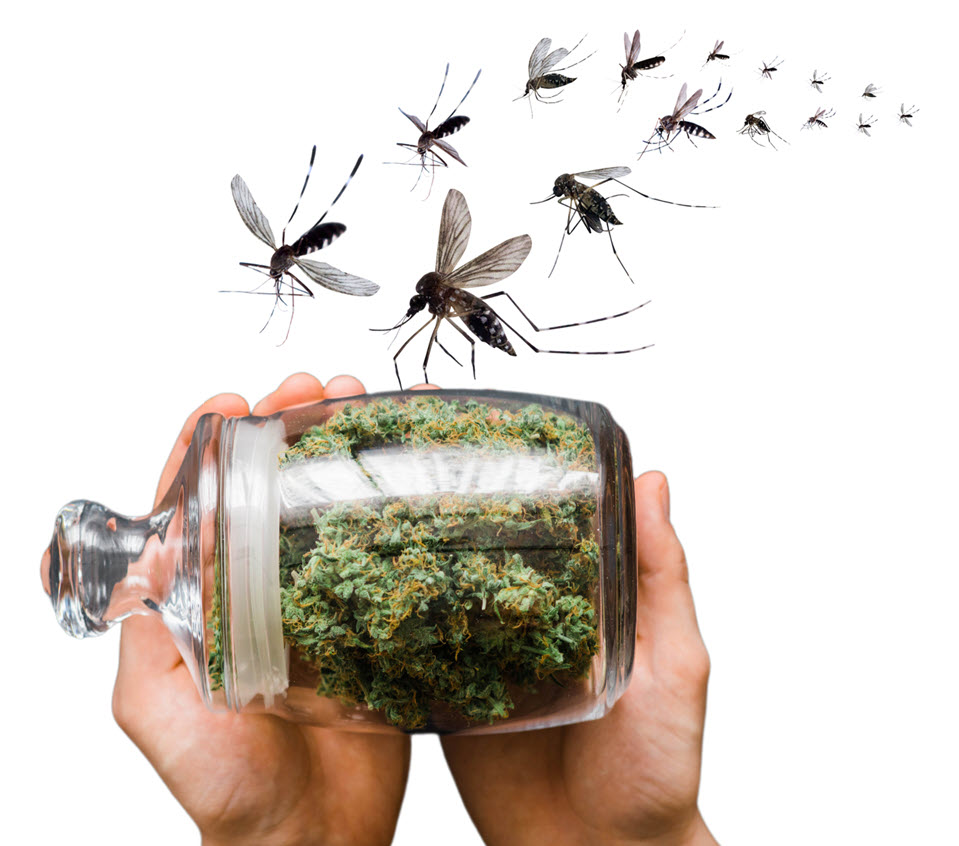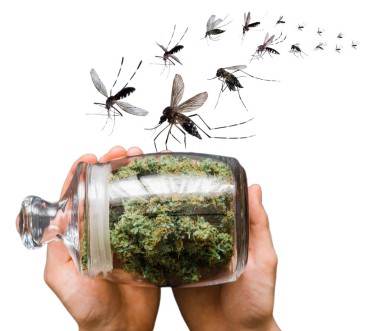Cannabis News
Scientists Got a Bunch of Worms High and All They Wanted to Do Was Eat Junk Food
Published
2 years agoon
By
admin
After consuming cannabis, many individuals experience an uptick in their hunger, commonly known as munchies. This phenomenon is so widely recognized that it often appears in movies and TV shows, depicting people developing an insatiable craving for food after smoking cannabis.
However, the munchies are not a mere myth. Cannabis possesses the ability to stimulate people’s appetite and cravings. Let’s delve deeper into the mechanisms through which it triggers this effect.
Why Does Cannabis Make People Hungry?
Cannabis impacts appetite through two distinct mechanisms. Firstly, it can enhance the flavor of food, making it more appealing and increasing the likelihood of consumption. Secondly, it can deceive the brain into perceiving hunger signals, even when you have recently eaten.
When cannabinoids, the active constituents in cannabis, attach to specific receptors in the body, they produce distinct effects. Upon binding to receptors on your tongue, they augment the brain’s reaction to sweet-tasting food and intensify the craving for fatty foods. Furthermore, a clinical investigation indicated that inhaling cannabis can boost the production of hormones responsible for triggering hunger.
It is important to note that not all cannabis products induce hunger, as the impact on appetite levels depends on the activation of specific receptors. The primary cannabinoid responsible for stimulating appetite is tetrahydrocannabinol (THC), whereas other cannabinoids may not activate the receptors that regulate hunger.
While THC is the primary cannabinoid known to enhance appetite, it is just one of over 100 active chemicals in cannabis. Animal research has revealed that cannabigerol (CBG), another cannabinoid, may also trigger hunger without causing the intoxicating effects of THC. This makes CBG an attractive study area for researchers seeking to stimulate appetite without the associated high produced by THC.
How Long Do the Munchies Last?
The duration of munchies following cannabis consumption can be challenging to determine precisely. The quantity and mode of consumption are significant factors that affect the course of the effects.
For instance:
Inhaling or Smoking Cannabis: This method causes cannabis to achieve its peak concentration in the brain within 3 to 10 minutes and typically subsides within 2 to 3 hours.
Consuming cannabis orally: When cannabis is ingested, it may take up to 2 hours to attain its maximum concentration in the brain. However, its effects may last 6 to 8 hours, sometimes even longer. It is worth noting that individuals may react differently to cannabis, and as a result, the duration and intensity of hunger may differ from the pattern above.
Worms Get The Munchies, Too
Recent research has uncovered that it’s not only humans who experience the munchies; worms also demonstrate a similar fondness for their preferred treats following cannabis consumption.
According to Shawn Lockery, a researcher at the University of Oregon in Eugene, Cannabinoids increase the appetite of nematodes for their preferred foods while simultaneously reducing their hunger for non-preferred foods. As such, the impact of cannabinoids on nematodes aligns with the effects of marijuana on human appetites.
He added, “Nematodes separated from the mammalian evolutionary lineage over 500 million years ago. It’s astounding that the influence of cannabinoids on appetite has persisted for such an extended period.”
Lockery clarified that the study’s genesis dates back to 2015, following the legalization of cannabis in Oregon. He remarked that at that time, the laboratory at the University of Oregon was engrossed in analyzing nematode food preferences as part of our study on the neural underpinnings of economic decision-making.
In a ‘Friday afternoon experiment’ that was almost too impulsive, they decided to immerse worms in cannabinoids to explore if it affects their current food choices. Astonishingly, it did! And after years of follow-up research, the findings are finally documented in this paper.
Cannabinoids exert their effects by attaching to cannabinoid receptors, detector proteins in the brain, nervous system, and other bodily tissues. These receptors typically react to endocannabinoids, naturally occurring molecules in the body. The endocannabinoid system governs various crucial functions, including eating, memory and learning, anxiety, metabolism, and reproduction.
The molecular structure of the cannabinoid system in nematodes bears a striking resemblance to that in humans and other creatures. This prompted whether the appetite-stimulating effects of cannabinoids, known as “hedonic feeding,” would also be preserved across different species.
Details of the Experiment
In the latest study, scientists initially demonstrated that nematodes respond to the endocannabinoid anandamide by consuming more food, particularly their preferred type. The team also discovered that the effects of endocannabinoids on the worms were contingent on the existence of their cannabinoid receptors.
The researchers conducted additional studies where they genetically modified the cannabinoid receptor of C. elegans with the human cannabinoid receptor. They discovered that the worms responded as expected to cannabinoids. This finding highlights the similarity in the effects of cannabinoids in both nematodes and humans. The team also found that the effects of anandamide relied on neurons involved in detecting food.
Lockery explained that cannabinoids cause a significant change in the sensitivity of a crucial olfactory neuron responsible for detecting food in C. elegans. The neuron becomes more responsive to pleasant and less responsive to unpleasant food smells. This phenomenon clarifies the variations in the worm’s food intake, similar to how THC enhances the flavor of delectable foods in humans.
According to Lockery, the discoveries in C. elegans are interesting and hold immense practical implications. He stated that cannabinoid signaling is widespread across various tissues in the human body, indicating its potential involvement in developing and managing numerous diseases.
The functionality of the human cannabinoid receptor gene in C. elegans’ food preference studies creates an opportunity for swift and cost-effective screening of drugs that aim to target diverse proteins linked to cannabinoid signaling and metabolism. This has significant implications for human health.
Conclusion
The research on how cannabinoids affect nematodes reveals fresh information about the evolutionary preservation of the endocannabinoid system and its function in controlling hunger in many species. The effects of cannabis on appetite seem to be the same in worms and humans, pointing to a highly conserved mechanism in the brain and neurological system.
This study opens up new avenues for studying the intricate interplay between cannabis and appetite regulation, which may help create fresh remedies for diseases like cachexia and anorexia. Realizing that nematodes also have food needs can cause some people to reevaluate their opinion of these microscopic critters, transforming them from unrelatable soil-dwelling organisms to relatable beings with similar appetites.
WHAT ARE THE MUNCHIES, READ ON…
You may like
Cannabis News
Global Cannabis Spotlight: The Czech Republic’s Psychomodulatory Substances Law
Published
21 minutes agoon
January 14, 2025By
admin
Last year, I attended an Expert Seminar in Amsterdam on Cannabis Regulation, EU Drug Law, Trade Rules, and the UN Drug Control Treaties. A central topic focused on advancing full cannabis legalization while complying with EU law and international Drug Treaties. During the discussion, Czechia presented its three-pillar approach to cannabis regulation: (1) decriminalization (in 2010, Czechia decriminalized cultivating up to five plants and possessing up to half an ounce of marijuana); (2) regulation of “psychomodulatory substances”; and (3) full commercial regulation. Like Germany, Malta, and Luxembourg, Czechia’s approach relies on scientific evidence. It shows that regulation, rather than prohibition, better protects children and society’s health, safety and welfare.
What is the Psychomodulatory Substances Law?
The law and related rules (effective on July 1, 2025), creates a new category of psychoactive substances with acceptable health risks. The current list includes four substances: low-THC cannabis extracts and tinctures (≤1% THC), kratom, and kratom extract. Other substances, like Hexahydrocannabinol (HHC), could be added if research shows their low health risks after two years. To be included, substances must prove they don’t pose significant public health or societal risks.
HHC faces hurdles in gaining approval. Czechia previously sought to ban HHC products in 2024. Additionally, the global community is still evaluating the substance. Last year, the WHO completed its review of HHC. Many expect the UN Commission on Narcotic Drugs to schedule it under the 1971 Convention. While cannabis is listed under the 1961 Single Convention, “industrial hemp” is excluded. This creates a legal loophole for low-THC hemp programs.
In Czechia, cannabis with less than 1% THC is classified as “technical hemp.” This classification has led to a legal grey area, increasing illicit-market activity. The Psychomodulatory Substances Law aims to curb illicit market influence by providing regulated access through licensed operators. This will help protect children, adolescents and adult consumers.
Once added to the list, psychomodulatory substances can be sold to adults (18+) for human consumption. Retail sales will begin in specialized stores by mid-2025. However, EU food and cosmetic laws prevent these substances from being sold in finished food products or cosmetics. Commercial operators will need permits to ensure compliance with regulations and local municipalities can impose their own usage restrictions.
Regulating instead of prohibiting ensures safer, quality-controlled products. This protects vulnerable groups. The law seeks to balance public health protections with Czechia’s obligations under international drug conventions and EU law. Czechia believes its approach aligns with its international commitments and the EU’s free movement of goods.
Legal regulation
Many hoped for full legalization of commercial cannabis. EU and international law create barriers the Czech government is unwilling to challenge. As more quasi-legal programs emerge across Europe, pressure may build on the EU to adjust its laws, allowing for fully regulated commercial cannabis sales. Until then, scaled-back approaches like Czechia’s psychomodulatory substances law will help fill the gap.
Conclusion
Czechia’s regulatory framework aims to reduce illicit market activity while prioritizing public health and welfare. It is not the first EU country to explore alternatives to full cannabis legalization and it likely won’t be the last. Despite a conservative government, Czechia balances traditional views with evidence that regulation, not prohibition, is the best approach. As seen in the U.S., low-THC legalization can create a robust market. It can also lead to unintended consequences, like unregulated intoxicating hemp products.
Since Czechia’s law does not allow ready-to-eat low-THC products, it remains unclear whether the country will face the same challenges seen elsewhere. While illicit market activity in cannabis extracts and tinctures will likely decrease, demand for ready-to-eat, low-THC products may rise. Until countries regulate the entire supply chain—from seed to sale (including ready-to-eat products and high-THC marijuana)—it will remain difficult to eliminate illicit market influence. Czechia operates within the constraints of EU and international law. This hinders EU members from implementing fully legalized commercial cannabis programs. As a result, the illicit market will continue to fill any gaps left by these limitations.
Cannabis News
Spray CBD to Control Mosquitoes Instead of Pesticides?
Published
1 day agoon
January 13, 2025By
admin

CBD For Pest Control?? New Study Shows CBD Is Effective In Killing Larvae Of Yellow Fever Mosquitoes
Dengue. Chikungunya. Zika virus. Yellow fever. West Nile disease.
If you know what these words mean, you know how much fear these words can incite. All of these words are the names of mosquito-borne diseases that are so dangerous they could be fatal, without early treatment and diagnosis. They can all be transmitted by the yellow fever mosquito, also known as the Aedes aegypti.
Yellow fever mosquitoes can live in any tropical or subtropical, as well as some temperate climates near human residences. There are many ways humans can inhibit the proliferation of these mosquitoes, particularly targeting a reduction or total elimination of eggs and larvae in human dwellings. However, it’s just as important to wear insect repellent too.
Unfortunately, we are yet to find a way to completely eliminate yellow fever mosquitoes. But this may be something that cannabis can help with too. Yes, you read that right: weed!
Cannabidiol (CBD) was recently featured in a publication called Insects documenting a study where hemp-derived CBD was found to be effective in killing yellow fever mosquito larvae. One of these two species studied was resistant to insecticides, yet, the researchers found that using pulverized and air-dried hemp leaves could be used to create a potent methanol concentration. The methanol was eventually removed in order to make it easier to analyze, and it was then fed to the mosquito larvae with its food. Then, it was discovered that the solution could kill these insects in 48 hours.
Erick Martinez Rodriguez, the study’s lead author and an entomology graduate student, told Ohio State News: “Mosquitoes are one of the deadliest animals in the world, mainly because as adults they serve as vectors of disease.”
“If you compare the amount of hemp extract needed to kill 50% of the population to other synthetic conventional insecticides, it is on the high side, but when you compare it side-by-side to other natural extracts we have tested in our lab, only a relatively low amount is required to produce high mortality values in larvae,” Rodriguez disclosed in the interview.
It’s also good to note that hemp is a sustainable crop, so compared to other plant-based insecticides, it could be a good choice and produced economically, adds Rodriguez.
“CBD is a compound that appears to be safe for people and our companion animals to ingest,” explains Peter Piermarini, the study’s co-author and an entomology professor at Ohio State University. “It’ll be interesting to learn more about how CBD interacts with various proteins in mammals and insects to understand why it’s safe for people but not insects,” he added.
Other Studies
This isn’t the first time that cannabis has been studied for its potential applications as an insecticide. According to a recent scientific review from researchers at the Universidade do Sul de Santa Catarina together with investigators at the Universidade Estadual de Sao Paolo in Brazil analyzed the impacts of cannabis on the eggs, larvae, pupae, and even adult vector insects including 4 mosquito species and one type of flea using existing studies.
The researchers said the results revealed the potential insecticidal effects of cannabis in the form of nanoemulsions, extracts, and essential oils. “Different cannabis formulations showed an insecticidal effect on the developmental stages of five species of medically important insects,” read the report. “The larval phase was the most studied; it was approached in all the articles reviews and taking into account all the Cannabis formulation formats,” the authors said.
The findings further cement the fact that cannabis should be explored much further as a natural, safe insecticide especially for targeting dangerous insects that can cause life-threatening disease to humans.
“However, we ought to clarify that despite the reported Cannabis insecticidal action on this insect vectors’ stage of development, there are still few studies that have approached the effect of this plant on the vectors’ larval stage that would allow an effective conclusion considering each formulation,” they wrote.
Meanwhile, researchers have also looked into the potential use of cannabis as a pesticide. Cornell University investigators from the School of Integrative Plant Science (Cornell AgriTech’s College of Agriculture and Life Sciences or CALS) discovered that a high concentration of cannabinoids from hemp leaves may have deterred insects chewing it, compared to other leaves that had less cannabinoids.
According to Larry Smart, a CALS professor and plant breeder, there’s a great lack of studies looking into why cannabis plants evolved to contain over 100 unique cannabinoids. “It has been speculated that they are defensive compounds, because they primarily accumulate in the female flowers to protect seeds, which is a fairly common concept in plants,” Smart explained. “But no one has put together a comprehensive set of experimental results to show a direct relationship between the accumulation of these cannabinoids and their harmful effects on insects,” he said.
When Cornell University began their hemp breeding program in 2017, that’s when the researchers observed a strange phenomenon: hemp from Ukraine, which didn’t produce cannabinoids, were far more vulnerable to being eaten by Japanese beetles. However, other hemp varieties that did produce cannabinoids didn’t have the same results. “In the absence of cannabinoids, we saw heavy insect damage, and in the presence of cannabinoids, we saw much less damage,” Smart said.
Conclusion
While we do need more studies on the subject, it’s clear that this is an angle worth exploring. Cannabis and hemp in general have shown to be effective in killing pests, especially the larvae of mosquitoes that transmit potentially fatal diseases. Aside from being effective, cannabis is also a much more cost-effective and environmentally-friendly solution.
PESTICIDES AND CANNABIS, READ ON…
Cannabis News
Thinking about Suicide, Smoke Some Weed
Published
3 days agoon
January 11, 2025By
admin

The conversation surrounding medical cannabis has gained significant momentum in recent years, especially as more jurisdictions legalize its use for therapeutic purposes. A recent study has added a compelling dimension to this dialogue, revealing that patients who utilize medical cannabis are less likely to experience suicidal thoughts. This finding is particularly pertinent given the rising rates of mental health issues and suicidality across various demographics. This article will explore the study’s methodology, findings, implications for mental health treatment, and the broader context of cannabis use in psychiatric care.
Overview of the Study
Research Design
The study was conducted by a team of researchers interested in understanding the mental health outcomes associated with medical cannabis use. They focused on a cohort of patients who had been prescribed cannabis-based medicinal products (CBMPs) for various medical conditions, including chronic pain, anxiety disorders, and post-traumatic stress disorder (PTSD). The researchers employed a longitudinal design, allowing them to track changes in mental health status over time.
Participants
The study involved a diverse group of participants, including adults from various age groups, genders, and backgrounds. All participants had a documented history of mental health issues and were seeking alternative treatments due to inadequate responses to conventional therapies. The sample size included 500 patients who provided informed consent to participate in the research.
Data Collection
Data were collected through self-reported questionnaires administered at multiple points: before starting medical cannabis treatment and at regular intervals thereafter (e.g., one month, three months, and six months post-initiation). The questionnaires assessed various aspects of mental health, including:
-
Suicidal Ideation: Participants rated the frequency and intensity of any suicidal thoughts they experienced.
-
Depression and Anxiety Symptoms: Standardized scales were used to measure levels of depression and anxiety.
-
Quality of Life: Participants reported on their overall quality of life and well-being.
Reduction in Suicidal Thoughts
One of the most significant findings from the study was that patients who began using medical cannabis reported a marked reduction in suicidal ideation. Specifically:
-
Post-Treatment Outcomes: Within three months of initiating cannabis treatment, this figure dropped to around 10%. By six months, only about 5% reported ongoing suicidal thoughts.
This substantial decline suggests that medical cannabis may have a protective effect against suicidality for certain patients.
Improvement in Mental Health Symptoms
In addition to reduced suicidal thoughts, many participants reported improvements in other mental health symptoms:
-
Anxiety Reduction: Around 70% of participants noted decreased anxiety levels after starting medical cannabis treatment.
-
Depression Alleviation: Approximately 65% reported an improvement in depressive symptoms. These findings align with previous research suggesting that cannabinoids may help alleviate symptoms associated with mood disorders.
Demographic Insights
The study also explored how demographic factors influenced outcomes:
-
Age Variations: Younger adults (ages 18-30) showed more significant reductions in suicidal ideation compared to older adults. This may suggest that younger individuals are more responsive to the therapeutic effects of cannabis.
-
Gender Differences: Female participants reported higher initial levels of suicidal thoughts but experienced similar reductions as their male counterparts following treatment.
Contextualizing the Findings
The Debate on Cannabis and Mental Health
The relationship between cannabis use and mental health has been complex and often contentious. Historically, many studies have highlighted potential risks associated with recreational cannabis use, including increased rates of anxiety, depression, and psychosis. However, this new research emphasizes the potential benefits of medicinal cannabis for patients with severe mental health issues.
Recreational vs. Medicinal Use
It is essential to differentiate between recreational and medicinal cannabis use:
-
Recreational Use Risks: Research has indicated that recreational users may be at higher risk for developing mental health issues. For instance, a study published in *JAMA Psychiatry* found that frequent recreational cannabis users were more likely to report suicidal thoughts compared to non-users.
-
Medicinal Use Benefits: In contrast, medicinal cannabis is often prescribed specifically for its therapeutic properties. The cannabinoids found in medical products—such as THC (tetrahydrocannabinol) and CBD (cannabidiol)—have been shown to have anxiolytic (anxiety-reducing), antidepressant, and neuroprotective effects.
Mechanisms Behind the Effects
While this study provides compelling evidence regarding the benefits of medical cannabis for reducing suicidal thoughts, it also raises questions about the underlying mechanisms at play:
-
Endocannabinoid System: The endocannabinoid system (ECS) plays a crucial role in regulating mood, stress responses, and emotional processing. Cannabinoids interact with ECS receptors (CB1 and CB2), potentially modulating neurotransmitter release related to mood regulation.
-
Pain Management: Chronic pain is often linked with depression and suicidal ideation. By alleviating pain symptoms through medical cannabis use, patients may experience an overall improvement in their quality of life and mental health status.
Implications for Treatment
The findings from this study have several important implications for clinical practice regarding mental health treatment:
Integrating Medical Cannabis into Treatment Plans
Given the promising results regarding reduced suicidality among patients using medical cannabis:
-
Personalized Treatment Approaches: As with any treatment modality, it is crucial for healthcare providers to tailor approaches based on individual patient needs. Medical history, current medications, and personal preferences should all be considered when recommending cannabis as a treatment option.
Need for Further Research
While these findings are encouraging, they also underscore the necessity for further research:
Addressing Concerns About Cannabis Use
Despite the positive findings regarding medical cannabis use in reducing suicidality, it is essential to address potential concerns:
While medicinal use can offer benefits, there is still a risk associated with misuse or dependency on cannabis products:
Stigma Surrounding Cannabis Use
Despite growing acceptance of medical cannabis, stigma remains a barrier for many individuals seeking treatment:
-
Concealment of Use: Many patients feel compelled to hide their cannabis use due to fear of judgment, leading to a lack of open dialogue with healthcare providers, which can hinder effective treatment.
-
Misconceptions and Misinformation: Stigma is often fueled by misconceptions about cannabis, including its association with addiction and recreational use, which can deter patients from seeking necessary medical care.
-
mpact on Mental Health: The stigma associated with cannabis use can contribute to negative mental health outcomes, such as anxiety and depression, as individuals grapple with societal perceptions and internalized shame.
Healthcare providers should foster open conversations about medical cannabis with their patients. Addressing concerns directly can help reduce stigma and encourage individuals to seek appropriate care.
Conclusion
A recent study indicates that patients using medical cannabis experience a significant reduction in suicidal thoughts, underscoring its potential therapeutic benefits amid rising mental health issues. Understanding alternative treatment options is increasingly vital, and while further research is needed to explore the mechanisms and long-term effects, this study supports considering medical cannabis as a viable treatment for severe mental health conditions. By fostering open communication about treatment options and promoting responsible use practices, healthcare providers can better support patients. As societal attitudes toward cannabis evolve alongside scientific understanding, prioritizing comprehensive care for those facing mental health challenges is essential, recognizing medical cannabis’s potential to alleviate suffering and improve well-being.
CANNABIS FOR TEEN SUICIDE RATES, READ ON…

Global Cannabis Spotlight: The Czech Republic’s Psychomodulatory Substances Law
DEA cannabis rescheduling hearings canceled by judge (Newsletter: January 14, 2025)

Karma Koala Podcast 219: Matt Brockmeier of Antithesis Law.. The New Psychedelics Program In Colorado & Being A Psychedelics Lawyer

Soap Operas Reflect The Changing Status Of Cannabis

The 12 Best Glue crosses of all time

Dolly Parton Expands Her Food Empire

Spray CBD to Control Mosquitoes Instead of Pesticides?

How to Make THC Gummies with Cannabutter

How to Become a Budtender in Michigan

Best Cannabis Nutrients for Soil

Distressed Cannabis Business Takeaways – Canna Law Blog™

United States: Alex Malyshev And Melinda Fellner Discuss The Intersection Of Tax And Cannabis In New Video Series – Part VI: Licensing (Video)

What you Need to Know

Drug Testing for Marijuana – The Joint Blog

NCIA Write About Their Equity Scholarship Program

It has been a wild news week – here’s how CBD and weed can help you relax

Cannabis, alcohol firm SNDL loses CA$372.4 million in 2022

A new April 20 cannabis contest includes a $40,000 purse

Your Go-To Source for Cannabis Logos and Designs

UArizona launches online cannabis compliance online course
Trending
-

 Cannabis News2 years ago
Cannabis News2 years agoDistressed Cannabis Business Takeaways – Canna Law Blog™
-

 One-Hit Wonders2 years ago
One-Hit Wonders2 years agoUnited States: Alex Malyshev And Melinda Fellner Discuss The Intersection Of Tax And Cannabis In New Video Series – Part VI: Licensing (Video)
-

 Cannabis 1012 years ago
Cannabis 1012 years agoWhat you Need to Know
-

 drug testing1 year ago
drug testing1 year agoDrug Testing for Marijuana – The Joint Blog
-

 Education2 years ago
Education2 years agoNCIA Write About Their Equity Scholarship Program
-

 Cannabis2 years ago
Cannabis2 years agoIt has been a wild news week – here’s how CBD and weed can help you relax
-

 Marijuana Business Daily2 years ago
Marijuana Business Daily2 years agoCannabis, alcohol firm SNDL loses CA$372.4 million in 2022
-

 California2 years ago
California2 years agoA new April 20 cannabis contest includes a $40,000 purse






